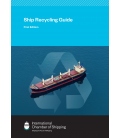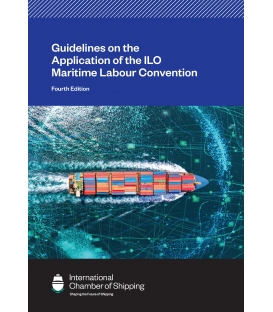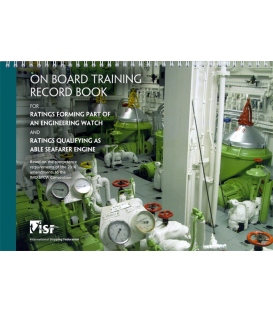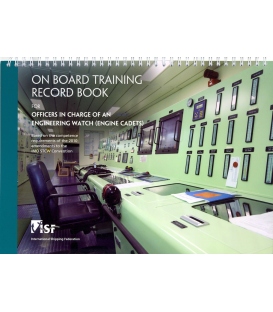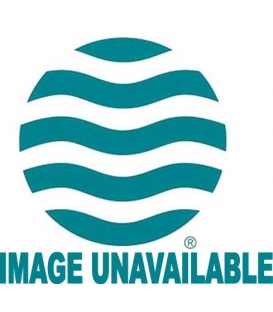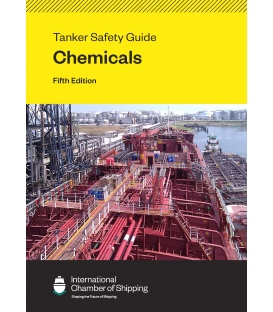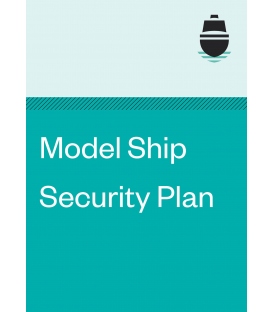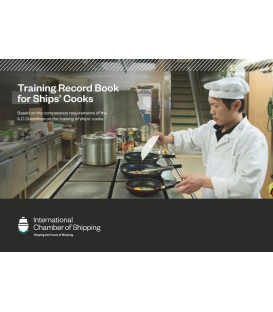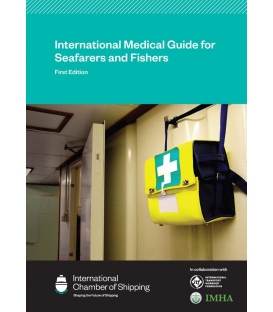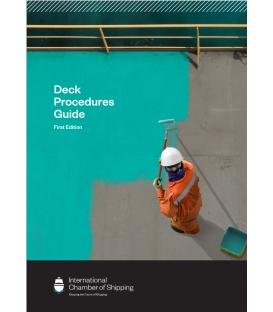

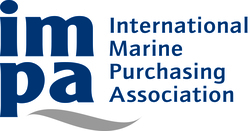
Sign up for our Newsletter
Reducing Greenhouse Gas Emissions: A Guide to IMO Regulatory Compliance (2nd, 2024)
Shipping – as one the world’s largest transport sectors – is experiencing major regulatory challenges to achieve the international targets on reducing GHG emissions. This new edition provides a comprehensive overview of all of these complex regulations in one place, guiding readers through compliance with the 2021 amendments to MARPOL Annex VI, the revised 2023 IMO GHG Strategy and the EU’s new Emissions Trading System (EU ETS).
The EU ETS began to apply to international shipping at the start of 2024 and EU allowances are due to be surrendered by shipping companies in 2025. A brand new chapter in this guide focuses solely on the EU ETS to explain how it currently applies to ships trading in and out of the EU. Readers can expect to be better informed on:
• The shipping company’s responsibility under the EU ETS
• What voyages are covered by the EU ETS
• What to include on emissions monitoring plans
• How to calculate the amount of allowances owed and more
The interlinked relationship between reducing underwater radiated noise and GHG emissions is detailed, including a new appendix that lists approximately 100 different reduction measures.
Reducing Greenhouse Gas Emissions: A Guide to International Regulatory Compliance also plainly sets out the existing IMO regulations. Specifically, the application of the Energy Efficiency Design Index (EEDI) for new ships, Energy Efficiency Existing Ship Index (EEXI), Carbon Intensity Indicators (CII) and submission of Ship Energy Efficiency Management Plans (SEEMPs).
This guide is essential for shipowners, operators and managers subject to the regulations, particularly MARPOL Annex VI. It will also be valuable to those involved in the design of new ships and modification of existing ships, including naval architects.
|
1 Introduction 1.1 Overview According to the Fourth IMO GHG Study, published in 2020, international shipping (which carries around 90% of global trade) is currently responsible for about 2% of the world’s annual carbon dioxide (CO2) emissions from human activity. Figure 1.1 illustrates how the growth in maritime trade is linked to international shipping emissions. It also shows that total CO2 emissions by the sector have remained below 2008 levels, despite a significant increase in maritime trade. IMO, as the industry’s global regulator, is responsible for reducing emissions from shipping. In 2011, IMO adopted the first ever greenhouse gas (GHG) reduction regulations applicable to an entire industrial sector globally. These included the mandatory application of the Energy Efficiency Design Index (EEDI) to new build ships and a requirement for shipping companies to develop a Ship Energy Efficiency Management Plan (SEEMP) for carriage and use by each of their ships. In response to the 2018 Paris Agreement by the United Nations Framework Convention on Climate Change, which seeks to limit global temperature increases to 1.5 degrees centigrade, IMO adopted its Initial GHG Strategy to phase-out all GHG emissions from international shipping as soon as possible. As a first step under the 2018 Initial IMO GHG Strategy, international shipping was required to deliver at least a 40% efficiency improvement, as an average across the fleet, by 2030 compared to 2008. IMO revised its Initial GHG Strategy which was adopted at Marine Environment Protection Committee (MEPC) 79, with many IMO Member States now calling for the complete phase-out of most GHG emissions by 2050. This strategy was revised in 2023, with the 40% reduction in CO2 emissions by 2030 also featuring in this new strategy. Further information can be found in section 1.4: The 2023 IMO GHG Strategy. The Initial IMO GHG Strategy led, in 2021, to the adoption by IMO Member States of a new package of regulations on CO2 reduction by the existing fleet, as amendments to Annex VI of the International Convention for the Prevention of Pollution from Ships (MARPOL). These new CO2 reduction regulations focus on improving the energy efficiency and carbon intensity of individual ships, and comprise complex technical, operational and administrative reporting requirements which will have significant implications for shipping companies, ship operators and their crews. Most importantly, ships will be awarded an A to E carbon intensity rating which will be updated on an annual basis. These new IMO requirements for the existing fleet are therefore likely to have significant commercial implications for shipping companies, including the freight rates and business which they may receive from other stakeholders such as charterers. 1.2 Air pollution from ships Air pollution is caused by pollutants that have an impact on air quality and the global climate. Table 1.1 lists the main air pollutants, including GHGs, covered by the IMO regulatory framework. GHGs are usually defined as the six gases that were initially considered under the United Nations Framework Convention on Climate Change process: • CO2; • Methane (CH4); • Nitrous oxide (N2O); • Hydrofluorocarbons (HFCs); • Perfluorocarbons (PFCs); and • Sulphur hexafluoride (SF6). The complete phase-out of CO2 emissions from ships by 2050 will require the global uptake of zero carbon technologies and fuels, which ICS describes as the ‘Fourth Propulsion Revolution’. Until these new fuels or technologies become widely available, the majority of the existing fleet will continue to be reliant on fossil fuels. The immediate focus of the IMO GHG Strategy since 2018 has therefore been the development of short term regulatory measures, primarily intended to improve the carbon efficiency of the existing fleet and to ensure the achievement of the 2030 IMO target. As shown in table 1.1, there are other substances which may contribute to climate change, such as NOX and Black Carbon, and there are parallel IMO work streams to establish control measures for these. NOX, due to its impacts on health, is addressed by the IMO NOX Technical Code adopted in 2008. Black Carbon is not covered by MARPOL Annex VI but, in 2021, IMO adopted a non-mandatory Resolution MEPC.342(77) which states that “Black Carbon is a short-lived contributor to climate warming” and which encourages “ship operators to voluntarily use distillate or other cleaner alternative fuels or methods of propulsion that could contribute to the reduction of Black Carbon emissions from ships when operating in or near the Arctic”. The IMO Strategy for the Reduction of Greenhouse Gas (GHG) Emissions from Ships (2023 IMO GHG Strategy) was adopted by MEPC in July 2023. It is expected that MEPC will lead the adoption of a radical package of new regulations in 2025 to achieve the ambitious new target of net zero emissions by international shipping, by or close to 2050, as a new Chapter to MARPOL Annex VI. MARPOL Annex VI was first adopted by IMO Member States in 1997 and entered into force in 2005. Its initial primary purpose was to tackle the impacts on human health from ships’ air pollution from, in particular from sulphur and nitrous oxides from exhaust gases. Following the adoption in 1997 of the Kyoto Protocol to the United Nations Framework Convention of Climate Change, pressure increased for IMO to address shipping’s GHG emissions too. This led, in 2011, to the adoption of the first set of amendments to MARPOL Annex VI which set out mandatory requirements for GHG reduction, including the application of the EEDI for the new build ships and the need for ships to develop SEEMPs. These initial IMO CO2 reduction requirements entered into force globally in 2013. In 2015, the United Nations Framework Convention on Climate Change adopted the Paris Agreement on climate change, which established the goal of keeping the average global temperature rise below 1.5°C and which required the world’s nations to make commitments to reduce CO2 emitted by their national economies called National Determined Contributions (NDCs). However, due to the difficulty of attributing CO2 emissions from international shipping to particular national economies, IMO remains responsible for addressing the emissions of this international transportation sector. This led to the adoption by IMO Member States in 2018 of the Initial IMO Strategy on the Reduction of GHG Emissions from Ships (Initial GHG Strategy). The GHG reduction objectives agreed under the 2023 IMO GHG Strategy are meant to be consistent with the United Nations Framework Convention on Climate Change (2015 Paris Agreement) goal of limiting global temperature increases to 1.5°C compared to pre-industrial levels. Another principle underpinning the IMO GHG Strategy is the need to follow an evidence-based process. Relevant data is required to inform decisions collectively made by IMO Member States including:
The policy-making process in relation to the IMO GHG Strategy, from data collection to application to ships through amendments to MARPOL, is summarised in figure 1.3. 1.3 The 2023 IMO GHG Strategy The 2023 IMO GHG strategy was revised in 2023 following an intensive political negotiation between IMO Member States. The key aspects of the 2023 IMO GHG Strategy are summarised in figure 1.4. A programme of follow-up actions of the 2023 IMO GHG strategy was developed, which is shown in table 1.2. The IMO GHG Strategy is subject to a five year review, with the next review due in 2028. Chapter 3 of this Guide contains a detailed review of the regulatory framework (including the 2021 amendments to MARPOL Annex VI). Chapter 5 contains a list of practical solutions available for ship compliance and energy efficiency improvement. 1.4 Implications of the 2023 GHG Strategy The 2023 IMO GHG Strategy identifies the development and finalisation of a basket of mid-term measure(s) including an economic element, the maritime GHG emissions pricing mechanism, for adoption by 2025 and entry into force by 2027. The 2023 Strategy not only sets out a net zero target by or close to 2050 and ambitious checkpoints to reduce absolute GHG emissions by 2030 and 2040, it also sets out a new ambition “to increase uptake of zero or near-zero GHG emission technologies, fuels and/or energy sources to represent at least 5%, striving for 10%, of the energy used by international shipping by 2030”. ICS fully supports IMO’s new GHG reduction targets. These objectives should be achievable provided IMO demonstrates the political will necessary to develop and adopt these measures required by 2025, as agreed by governments unanimously with adoption of the 2023 IMO GHG Strategy. Meeting these targets will not come without challenge, however, given that there is nearly no available zero or near-zero GHG marine fuels, apart from limited supplies of sustainable biofuel blends. The 2040 checkpoint of an absolute reduction in the sector’s total GHG emissions of 70-80% compared to 2008, regardless of trade growth, is particularly challenging. This checkpoint is likely only to be delivered if a ‘take-off’ point for the use of zero or near-zero GHG fuels and GHG reduction technologies is achieved by the end of this decade. The 2030 checkpoint 5-10% of energy used by international shipping to be generated from zero or near-zero fuels, energy sources and technologies is intended to deliver this ‘take-off’ point. With only six years remaining until 2030, however, this checkpoint is likely to be achieved only if a maritime GHG pricing mechanism is adopted by 2025 to meaningfully reduce the significant cost gap between zero or near-zero fuels and conventional fuels. This also, importantly, de-risks the investment decisions that are urgently from energy producers and the shipping industry. The shipping industry’s transition to net zero is also dependent on it being a truly global effort. A means of ensuring zero or near-zero GHG marine fuels are available in all ports worldwide, including those in developing countries, is needed by 2040. A guaranteed mechanism is then also needed as soon as possible that will generate billions of US dollars to support developing countries’ efforts in reducing the maritime GHG emissions. 1.5 Annex VI of MARPOL Convention The first version of MARPOL Annex VI ‘Regulations for the Prevention of Air Pollution from Ships’ was adopted in 1997. Since then, MARPOL Annex VI has been revised and expanded several times by means of amendments adopted through the MEPC. 1.5.1 History of MARPOL Annex VI Figure 1.5 shows a simplified timeline of the key changes made to MARPOL Annex VI over the past 25 years. In June 2021, MEPC adopted major amendments to Annex VI which are intended to further reduce the carbon intensity of international shipping, to give effect to the short-term measures agreed under the 2018 Initial IMO GHG Strategy. The amendments, known as the 2021 Revised MARPOL Annex VI, are set out in resolution MEPC.328(76). Containing new regulations for technical and operational measures to be implemented by both new and existing ships, the 2021 amendments to MARPOL Annex VI also lay out the foundations for future GHG reduction measures. The decision-making process at IMO and the associated workflow leading to amendments to MARPOL Annex VI may appear to be complex. Readers wishing to better understand how IMO decisions are taken and how MARPOL is amended should refer to Appendix A: The IMO GHG Strategy, which also contains a timeline of all IMO decisions addressing climate change from 2011 to 2050. 1.5.2 2021 Revised MARPOL Annex VI The key chapters and regulations in MARPOL Annex VI, 2021 revision, are listed in table 1.3. In view of the significant renumbering of regulations and paragraphs in the 2021 Revised MARPOL Annex VI, IMO has issued a circular (MEPC.1/Circ.897 (13 December 2021)) cross-referencing the 2021 Revised MARPOL Annex VI with the previous MARPOL Annex VI. See Appendix B: IMO references and useful resources. Note that the 2021 revision contains a review clause. This requires IMO to perform a review by 1 January 2026, to assess the effectiveness of the newly adopted regulations in reducing the carbon intensity of international shipping, and the need for possible corrections or strengthening of the EEXI and CII frameworks. 1.6 Expected developments 1.6.1 Carbon Intensity Code (CIC) IMO intends to develop a Carbon Intensity Code (CIC) that will consolidate all the relevant technical guidelines adopted by the MEPC. Such a code would ensure a uniform and consistent implementation of the requirements of MARPOL Annex VI, Chapter 4. The exact timeframe for its development and adoption is expected to become clearer after the review of the CIIs which is to be conducted by IMO by 1 January 2026. 1.6.2 Lifecycle assessment (LCA) guidelines A dedicated workstream has been established at IMO to develop lifecycle GHG/carbon intensity assessment guidelines for marine fuels. Such guidelines would support reducing the lifecycle GHG footprint of maritime fuels, promote the uptake of alternative low-carbon and zero-carbon fuels, and provide lifecycle (well-to-tank (WTT) and tank-to-wake (TTW)) CO2 emission factors for all relevant maritime fuels. The initial IMO LCA guidelines were finalised in 2023 and are contained in Resolution MEPC.376(80) - Guidelines On Life Cycle GHG Intensity Of Marine Fuels (LCA Guidelines). See Chapter 5: Efficiency improving solutions for more details. 1.6.3 GHG fuel standard (GFS) The aim of the GHG fuel standard (GFS) is to promote the uptake of alternative fuels. To comply with the GFS, ships would have to use eligible fuels. There are proposals for draft amendments to be made to MARPOL Annex VI to implement a global GFS, similar to those used in regulation 14.1 (IMO 2020 global sulphur limit) of MARPOL Annex VI. The GFS is a performance standard, independent of fuel type, which may help increase the production and uptake of all types of low- and zero-GHG fuels, including:
It is likely that these the production and availability of these fuels will not be in significant quantities before 2030. It is proposed that the GFS is complemented by an economic measure, such as the Fund and Reward (feebate) mechanism. It is proposed that all fuels have a maximum GHG fuel intensity that is allowed to be used on board. This is expected to be approved at MEPC 81 (Spring 2024) and adopted at MEPC 82 (Autumn 2024). In the interim, the IMO released MEPC.1/Circ.905 on the use of biofuels under regulations 26, 27 and 28 of MARPOL Annex VI. |
Contents
|
Chapter 1 Introduction 1.1 Overview 1.2 Air pollution from ships 1.3 The 2023 IMO GHG Strategy 1.4 Implications of the 2023 GHG Strategy 1.5 Annex VI of MARPOL Convention 1.5.1 History of MARPOL Annex VI 1.5.2 2021 Revised MARPOL Annex VI 1.6 Expected developments 1.6.1 Carbon Intensity Code (CIC) 1.6.2 Lifecycle assessment (LCA) guidelines 1.6.3 GHG fuel standard (GFS) Chapter 2 Key concepts 2.1 Overview 2.2 Energy Efficiency Design Index 2.2.1 EEDI: Key facts 2.2.2 ‘Attained EEDI’ formula 2.2.3 ‘Attained EEDI’ correction factors 2.2.4 EEDI reduction rates and reference value 2.2.5 EEDI in practice 2.2.6 Ship minimum propulsion power 2.2.7 EEDI database and reporting requirements 2.3 Energy Efficiency Existing Ship Index 2.3.1 EEXI: Key facts 2.3.2 ‘Required EEXI’ reduction rates and reference line 2.3.3 ‘Attained EEXI’ formula 2.3.4 Challenges with some parameters 2.3.5 Compliance with EEXI in practice 2.4 Carbon Intensity Indicators 2.4.1 CII: Key facts 2.4.2 ‘Attained CII’ calculation 2.4.3 Correction factors and voyage adjustment 2.4.4 ‘Required CII’ 2.4.5 CII ratings for ship performance 2.4.6 Compliance with CII framework 2.5 Ship Energy Efficiency Management Plan 2.6 Data Collection System for Fuel Oil Consumption of Ships 2.6.1 Fuel oil consumption 2.6.2 Annual operational CII Chapter 3 MARPOL Annex VI regulations, including the 2021 amendments 3.1 Overview 3.2 General provisions in MARPOL Annex VI 3.2.1 General application and definitions 3.2.2 Exemptions 3.3 MARPOL Annex VI, Chapter 4: Regulations on carbon intensity for international shipping 3.3.1 Application 3.3.2 Goal-based regulations 3.3.3 Regulations 22 and 24 – EEDI 3.3.4 Regulations 23 and 25 – EEXI 3.3.5 Regulation 26 – SEEMP 3.3.6 Regulation 27 – Collection and reporting of ship fuel oil consumption data 3.3.7 Regulation 28 – Operational carbon intensity 3.4 Survey, certification and means of control 3.4.1 Introduction to MARPOL Annex VI, Chapter 2 regulations 3.4.2 Steps for the EEXI certification 3.4.3 Documentation and audits under the CII framework 3.4.4 Port state control Chapter 4 Global implications of the EU Emissions Trading System 4.1 Overview 4.1.1 What is the EU ETS? 4.1.2 How the EU ETS functions 4.2 Phase-in timeline and scope 4.2.1 Ice-class ships 4.2.2 Excluded ships 4.3 Voyages covered by the EU ETS requirements 4.3.1 Transhipment ports for containerships 4.3.2 Exemptions 4.4 Port of call definition 4.5 Emissions calculation under the EU ETS 4.6 Updated emissions monitoring plan 4.7 Emissions reporting and verification 4.8 The Document of Compliance 4.9 Summary of key dates 4.10 The shipping company’s role and responsibility under the EU ETS 6 4.10.1 What entity is the shipping company? 4.10.2 Approaches to complying with the EU ETS obligations 4.11 Opening an account in the EU ETS Union Registry 4.11.1 Options to obtain EU allowances 4.11.2 A shipping company’s administering authority 4.12 Reporting of emissions 4.12.1 Application 4.12.2 EU MRV monitoring plans 4.12.3 Emissions to be reported 4.12.4 Shipping companies’ annual emissions reporting 4.12.5 Change of company and partial emissions reports 4.12.6 Other issues 4.13 Surrender of EU ETS allowances, enforcement and penalties 3 4.13.1 Surrender of EUAs 4.13.2 Financial penalties 4.13.3 Detention and expulsion orders 4.14 Review and revision clauses under the EU ETS 4.14.1 Implementation of EU ETS and interlinkage with EU MRV 4.14.2 Possible alignment with IMO regulations 4.15 EU ETS market 4.15.1 What are EU allowances? 4.15.2 EU ETS Union Registry 4.15.3 Account opening in the EU ETS Union Registry 4.15.4 Bilateral sale and purchase of EUAs Chapter 5 Efficiency improving solutions 5.1 Overview 5.2 How to categorise solutions 5.2.1 Improving a ship’s EEDI, EEXI or CII value 5.3 Machinery 5.3.1 Power limitation devices and engine de-rating 5.3.2 Carbon capture 5.4 Ship hydrodynamics 5.4.1 Hull 5.4.2 Propellers and rudders 5.5 Other energy saving solutions and assisted propulsion 5.5.1 Retrofitting options 5.5.2 Propulsion assistance 5.6 Operations optimisation (best practices) 5.6.1 Autopilot adjustment and use 5.6.2 Trim optimisation 5.6.3 Ballast operations management 5.6.4 Voyage optimisation 5.6.5 Speed management 5.6.6 ‘Just in time’ arrivals 5.6.7 Hydraulic system management 5.6.8 Main engine performance optimisation 5.6.9 Steam production 5.6.10 Electrical load management 5.6.11 Digital solutions 5.7 Alternative fuels 5.7.1 Fuel lifecycle 5.7.2 Fuel quality 5.8 GHG reduction measures and underwater radiated noise Appendices Appendix A The IMO GHG Strategy Appendix B IMO references and useful resources Appendix C GHG and underwater radiated noise reduction potential of available solutions Appendix D Checklists for managers Appendix D1 EEXI checklist for managers Appendix D2 CII checklist for managers Appendix E EU references and useful resources |
Foreword
|
In July 2023, as part of worldwide efforts to mitigate dangerous climate change, the Member States of the United Nations International Maritime Organization (IMO) unanimously adopted the 2023 IMO Strategy for the Reduction of Greenhouse Gas (GHG) Emissions from Ships, or what is now known as the 2023 IMO GHG Strategy. As well as setting out a net zero GHG target for international shipping, by, or close to, 2050, and ambitious indicative checkpoints for the reduction of international shipping’s absolute GHG emissions by 2030 and 2040, the revised IMO GHG Strategy sets out an important new level of ambition “to increase uptake of zero or near-zero GHG emission technologies, fuels and/or energy sources to represent at least 5%, striving for 10%, of the energy used by international shipping by 2030”. ICS fully supports these new GHG reduction targets. The enormity of this challenge, though, cannot be overstated. To make these highly ambitious targets and achieving them plausible, IMO intends to adopt a radical package of new regulations by 2025. This is expected to include a maritime GHG emissions pricing mechanism, as well as a Global Fuel Standard regulating the permitted GHG intensity of marine fuels, to be aggressively reduced between 2030 and 2040. The first edition of this Guide was published in 2022 to coincide with the entry into force globally of new IMO regulations adopted in 2021, which are intended to improve the energy efficiency of ships. This new regime includes the introduction of carbon intensity indicators and what is now known as the CII framework, whereby will ships be issued with annual A-E operational efficiency ratings, starting in 2024. The second edition of this Guide coincides with the initial publication of these new A-E ratings. While ICS fully supports the objectives of the CII framework, the methodology agreed by IMO to calculate the carbon intensity of individual ships has proved controversial, and is now the subject of an IMO review to be completed by 2026. In the meantime, ships have no choice but to comply with the CII framework and the other new IMO regulations which entered into force in 2022. These include the technical requirements of the Energy Efficiency Existing Ship Index (EEXI) and the ‘enhanced SEEMP’ concept, whereby Ship Energy Efficiency Management Plans are now subject to external verifications and audits. The details of this complex regulatory package, and how to achieve compliance, are explained within the new edition of this Guide, which also takes account of new IMO Guidelines adopted in 2023. Although not an IMO requirement, the new edition of this Guide on regulatory compliance with GHG regulations contains a new chapter setting out the details of the European Union’s Emissions Trading System (EU ETS), which will start to apply to international shipping in 2024. This also includes non-EU flag ships, which are currently expected to be required to surrender allowances, purchased on the EU carbon market, for CO2 emitted throughout voyages to and from the EU. As with the previous edition, this Guide is primarily intended for shipping companies and ship’s crews, to help them understand the IMO regulatory framework and its evolutions, including the 2021 amendments to MARPOL Annex VI, and to support decision-making on compliance with the latest mandatory requirements. This Guide is structured in five main chapters:
Appendix B contains the long and short titles (used in this Guide) of all relevant IMO guidelines as well as other useful guidance documents currently available. Appendix E contains long and short titles of all relevant EU references as well as other useful guidance documents currently available. In view of the ongoing development and regular changes being made to the IMO regulatory framework for GHG emissions, and to take account of experience gained during the initial implementation of these new requirements, revisions of this Guide are anticipated. |



